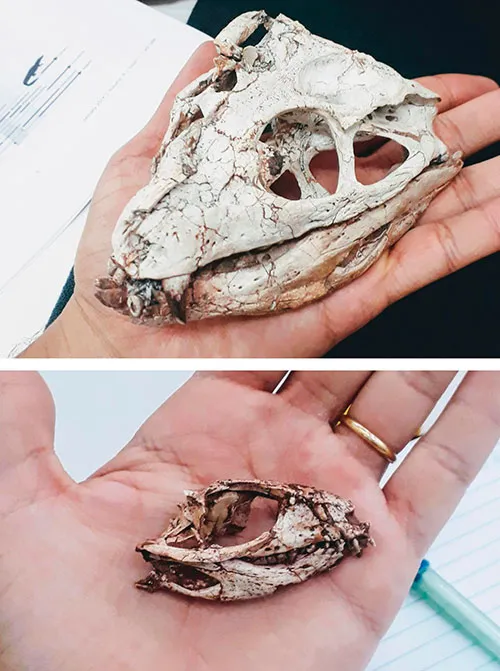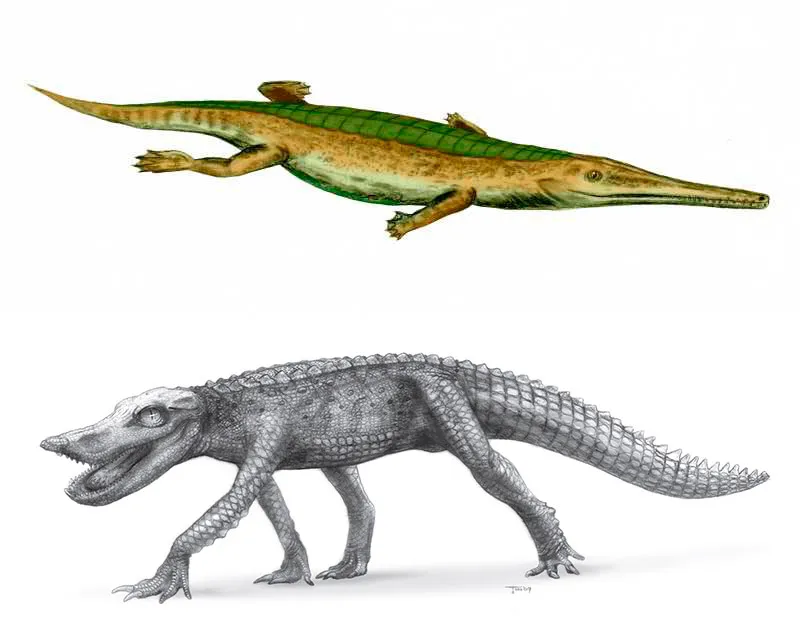Crocodiles and their relatives are often said to be 'living fossils', having evolved to be such good predators that they have remained unchanged for millions of years. However, a new study has shown that this is not the case: ancient crocodiles evolved rapidly and were incredible varied.
Modern crocodiles live in rivers, lakes and wetlands, and use their powerful jaws and long snouts to hunt fish, reptiles, birds and mammals.

Researchers from the University of Bristol found that in the time of the dinosaurs, some crocodiles developed dolphin-like adaptations to living in the oceans, and others lived on land as fast-moving plant-eaters.
The team studied the shape of the skulls and jaws of over 200 crocodile fossils, and analysed how they changed over a time span of 230 million years.
They found huge differences in the rate of evolution, leading to diversity in species that peaked in the Cretaceous period. Thalattosuchians, a marine relative of the crocodile with dolphin-like features, and the small, land-dwelling, long-legged notosuchians were among the fastest-evolving species, rapidly filling ecological niches.
In more recent times, crocodilians have evolved much more slowly. However, crocodiles, alligators and gharials are not living fossils: they have been evolving steadily over the last 80 million years, and show no signs of stopping.
Read more about ancient crocodiles:
- Ancient land-based crocodiles evolved to be more like whales
- Ancient crocodile may have walked on hind legs "just like a dinosaur"
- Ancient 8-metre crocodile needed extra bones to move around
“Crocodiles and their ancestors are an incredible group for understanding the rise and fall of biodiversity," said lead author Dr Tom Stubbs, a senior research associate at the University of Bristol’s School of Earth Sciences.“There are only 26 crocodile species around today, most of which look very similar. However, there are hundreds of fossil species with spectacular variation, particularly in their feeding apparatus.”
These periods of rapid evolution, likely caused by dramatic shifts in habitat and diet, have often been reported in groups with large variety in species. However, this is the first time that crocodiles, with such low variation in modern species, have been shown to follow this trend.

“Ancient crocodiles came in a dizzying array of forms," said Dr Stephanie Pierce, associate professor of organismic and evolution biology at Harvard University.“They were adapted to running on land, swimming in the water, snapping fish, and even chewing plants.
“Our study shows that these very different ways of living evolved incredibly fast, allowing extinct crocodiles to rapidly thrive and dominate novel ecological niches over many millions of years.”
Reader Q&A: Has an animal ever evolved itself into extinction?
Asked by: Matthew Cox, Wantage
It’s quite hard for a predator to drive itself extinct simply by being such a good hunter that it eats all of the available prey. Normally, evolution is a very slow process and predators are engaged in an ongoing arms race with their prey, who are also evolving new ways to escape.
If the balance starts to shift in favour of the predator, the amount of available food dwindles and the predators aren’t able to raise as many young. This allows the prey population to recover and equilibrium is restored.
But when a predator specialises to hunt a single prey species, it can get trapped in an evolutionary dead end. This happened to the Haast’s eagle in New Zealand, which had evolved to prey exclusively on the flightless moa bird. When humans arrived in the 13th Century, the moa were hunted to extinction within 200 years. The Haast’s eagle couldn’t adapt to find new prey and went extinct too.
This phenomenon, known as ‘coextinction’, is also common with parasites that have adapted to live on a single host animal.
Read more: